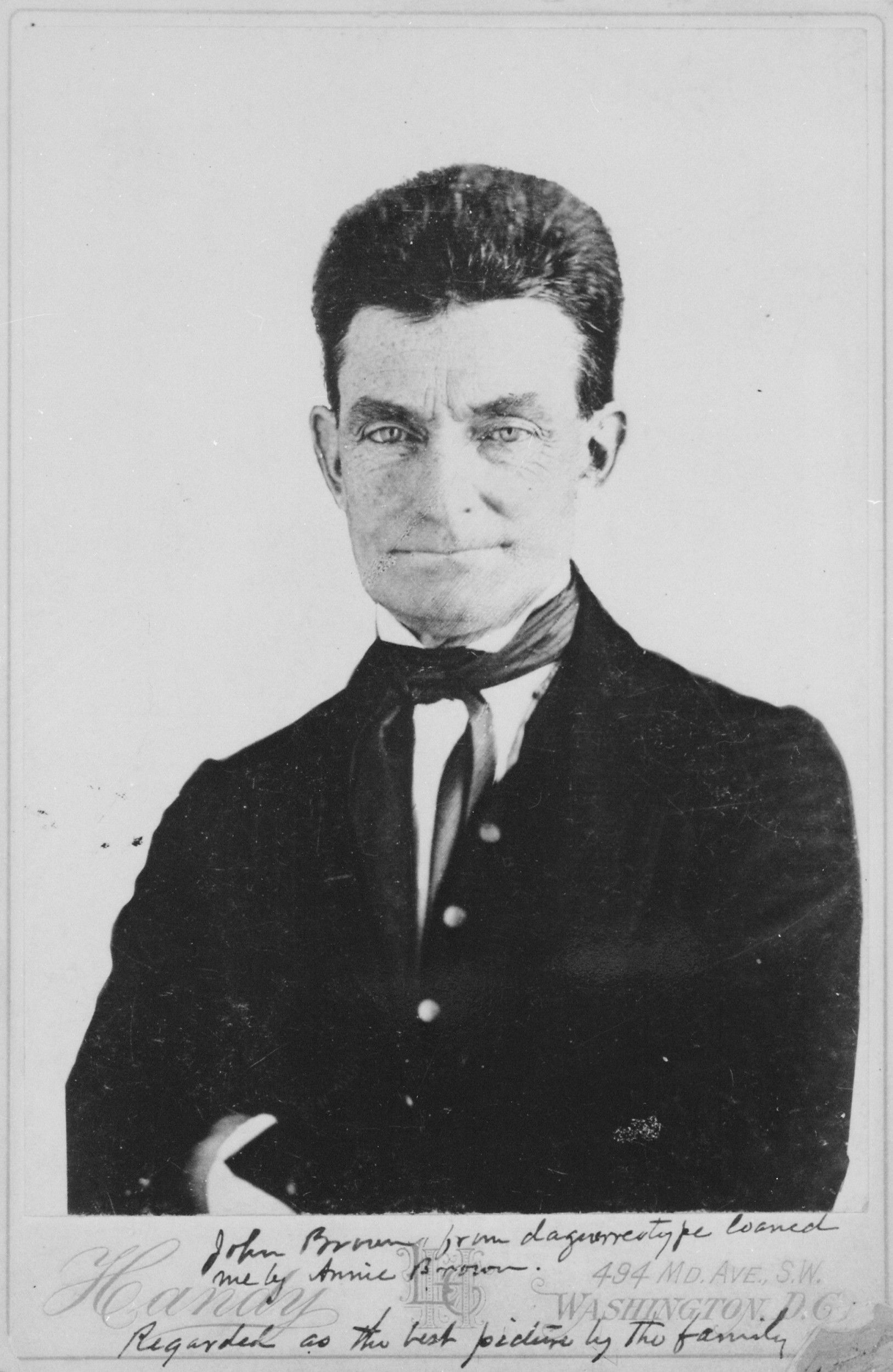Abolitionist John Brown
ca. 1850
Add to Favorites:
Add all page(s) of this document to activity:

Abolitionist John Brown was born on May 9, 1800, in Torrington, Connecticut, to a deeply religious Congregationalist and overtly antislavery family. At age five, his family moved west to Hudson, Ohio, where his father, Owen Brown, owned a successful tannery and supported the founding of Oberlin College, a racially inclusive co-ed high learning institution with an antislavery curriculum.
In 1825 Brown moved to western Pennsylvania. He opened his own tannery and started the Franklin Land Company with 700 acres for suburban development. The tannery was a major stop on the underground railroad. However, the panic of 1837, a financial crisis that caused plunging profits, prices, and wages and increasing unemployment, bankrupted Brown.
After the crisis, Brown emerged as an unyielding abolitionist. In 1851 he helped found the League of Gileadites, an organization of whites, free blacks, and runaway slaves dedicated to protecting fugitive slaves from slave catchers. By the end of 1856, Brown was one of the most renowned figures in “bleeding Kansas,” the violent confrontations over the legality of slavery in the Kansas territory.
On Sunday, October 16, 1859, Brown and his men began their raid on Harpers Ferry. Brown considered Harpers Ferry an ideal location to attack because it was close to a relatively high population of slaves; its proximity to the Blue Ridge mountain range offered an escape route; and the Federal armory and arsenal contained weapons Brown could use to defend himself.
After completing their mission, instead of running for the hills, Brown and his men remained in the armory in Harpers Ferry awaiting the army of slaves that Brown thought would rise up to join them. They never came. Brown was in custody before midday on October 18. Brown’s trial and sentence were carried out swiftly, and on December 2, 1859, he was hanged for treason, murder, and conspiring with slaves to rebel.
In 1825 Brown moved to western Pennsylvania. He opened his own tannery and started the Franklin Land Company with 700 acres for suburban development. The tannery was a major stop on the underground railroad. However, the panic of 1837, a financial crisis that caused plunging profits, prices, and wages and increasing unemployment, bankrupted Brown.
After the crisis, Brown emerged as an unyielding abolitionist. In 1851 he helped found the League of Gileadites, an organization of whites, free blacks, and runaway slaves dedicated to protecting fugitive slaves from slave catchers. By the end of 1856, Brown was one of the most renowned figures in “bleeding Kansas,” the violent confrontations over the legality of slavery in the Kansas territory.
On Sunday, October 16, 1859, Brown and his men began their raid on Harpers Ferry. Brown considered Harpers Ferry an ideal location to attack because it was close to a relatively high population of slaves; its proximity to the Blue Ridge mountain range offered an escape route; and the Federal armory and arsenal contained weapons Brown could use to defend himself.
After completing their mission, instead of running for the hills, Brown and his men remained in the armory in Harpers Ferry awaiting the army of slaves that Brown thought would rise up to join them. They never came. Brown was in custody before midday on October 18. Brown’s trial and sentence were carried out swiftly, and on December 2, 1859, he was hanged for treason, murder, and conspiring with slaves to rebel.
This primary source comes from the Records of the U.S. Marine Corps.
National Archives Identifier: 532587
Full Citation: Abolitionist John Brown ; ca. 1850; Records of the U.S. Marine Corps, Record Group 127. [Online Version, https://docsteach.org/documents/document/abolitionist-john-brown, April 25, 2024]Activities that use this document
- Key Figures Who Worked to End Slavery
Created by the National Archives Education Team
Rights: Public Domain, Free of Known Copyright Restrictions. Learn more on our privacy and legal page.



